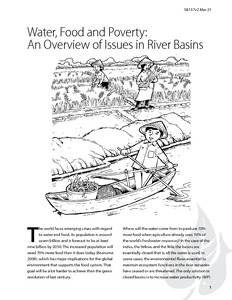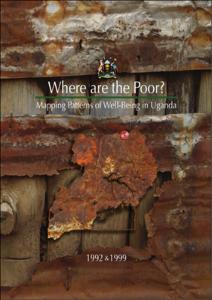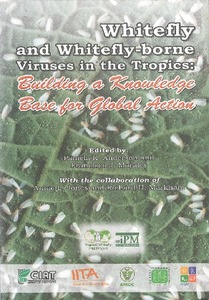Trends and Outlook: Agricultural Water Management in southern Africa. Country report - Zimbabwe. [Project report submitted to United States Agency for International Development’s (USAID’s) Feed the Future Program].
Water and poverty in two Colombian watersheds
Watersheds, especially in the developing world, are increasingly being managed for both environmental conservation and poverty alleviation. How complementary are these objectives? In the context of a watershed, the actual and potential linkages between land and water management and poverty are complex and likely to be very site specific and scale dependent. This study analyses the importance of watershed resources in the livelihoods of the poor in two watersheds in the Colombian Andes.
Where are the Poor? Mapping patterns of well-being in Uganda 1992 and 1999
Whitefly and whitefly-borne viruses in the tropics: building a knowledge base for global action
Winners and losers of IWRM [Integrated Water Resources Management] in Tanzania
This paper focuses on the application of the concept of Integrated Water Resources Management (IWRM) in Tanzania. It asks: how did IWRM affect the rural and fast-growing majority of smallholder farmers' access to water which contributes directly to poverty alleviation and employment creation in a country where poverty and joblessness are high?
Wetlands and people
Where are the poor and where are the trees?: targeting of poverty reduction and forest conservation in Vietnam
This paper highlights the spatial linkages of forest quality with poverty incidence and poverty density in Vietnam. Most of the Vietnamese poor live in densely populated river deltas and cities while remote upland areas have the highest poverty incidences, gaps, and severities. Forests of high local and global value are located in areas where relatively few poor people live, but where the incidence, gap, and severity of poverty are strongest, and where the livelihood strategies are based on agricultural and forest activities.
Where are the poor and where are the trees?: targeting of poverty reduction and forest conservation in Vietnam (Vietnamese)
This paper highlights the spatial linkages of forest quality with poverty incidence and poverty density in Vietnam. Most of the Vietnamese poor live in densely populated river deltas and cities while remote upland areas have the highest poverty incidences, gaps, and severities. Forests of high local and global value are located in areas where relatively few poor people live, but where the incidence, gap, and severity of poverty are strongest, and where the livelihood strategies are based on agricultural and forest activities.




